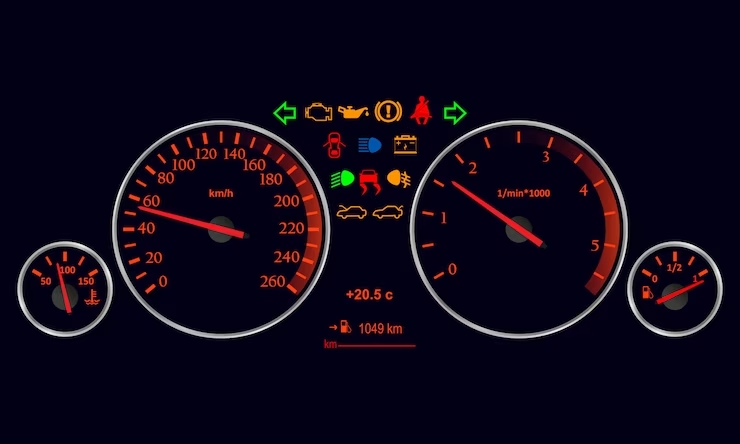Headlights are a critical safety feature in any vehicle, providing visibility during nighttime driving and adverse weather conditions. To ensure proper headlight functionality, vehicles are equipped with warning lights that alert drivers to potential issues with the headlights. In this article, we will discuss the importance of headlight warning lights, common warning light indicators, and troubleshooting tips to address headlight problems effectively.
The Importance of Headlight Warning Lights: Headlight warning lights serve as essential indicators to drivers, highlighting potential issues with the headlights. Here’s why they are important:
- Safety: Properly functioning headlights are crucial for safe driving, especially in low-light conditions. Headlight warning lights promptly alert drivers to any problems, ensuring that they can address issues and maintain optimal visibility on the road.
- Compliance with Traffic Laws: Headlight warning lights help drivers comply with traffic laws regarding headlight usage. In some regions, driving without functional headlights is illegal, and warning lights prompt drivers to take action and resolve any headlight-related problems promptly.
Common Headlight Warning Light Indicators: Headlight warning lights can vary depending on the vehicle make and model. Here are some common warning light indicators and their potential meanings:
- Headlight Bulb Symbol: A headlight bulb symbol illuminated on the dashboard usually indicates a problem with one or more headlight bulbs. This could mean a burned-out bulb or a faulty connection.
- Headlight Beam Symbol: If the headlight beam symbol remains lit, it could indicate an issue with the headlight beam adjustment or a malfunctioning leveling system. This warning light is more common in vehicles with adaptive or self-leveling headlights.
- Headlight Symbol with an Exclamation Mark: A headlight symbol accompanied by an exclamation mark often signifies a headlight system fault. This could be due to a wiring issue, a faulty control module, or a problem with the headlight assembly.
Troubleshooting Tips for Headlight Problems: If you encounter a headlight warning light, here are some troubleshooting tips to address the issue:
- Check the Bulbs: Inspect the headlight bulbs for signs of damage or burnout. If you find a defective bulb, replace it following the vehicle manufacturer’s instructions. Be sure to use the correct bulb type for your vehicle.
- Inspect the Connections: Ensure that the headlight bulb connections are secure and free from corrosion. Loose or corroded connections can affect the electrical flow and cause headlight problems. Clean the connections if necessary and reattach them securely.
- Verify the Headlight Switch: Check the headlight switch to ensure it is in the correct position. Sometimes, a warning light can be triggered if the switch is accidentally set to the incorrect setting or if there is a malfunction with the switch itself.
- Consult the Owner’s Manual: Refer to your vehicle’s owner’s manual to understand the specific warning light indications and recommended troubleshooting steps. The manual may provide guidance on resetting the headlight system or offer insights into common headlight issues.
- Seek Professional Assistance: If the warning light persists or you are unsure about the cause of the problem, it is advisable to consult a professional technician or visit a reputable auto service center. They have the expertise and specialized equipment to diagnose and repair headlight-related issues effectively.
Remember, proper maintenance and regular inspections are key to preventing headlight problems. Routinely check the condition of your headlights and address any issues promptly to ensure optimal visibility and safety on the road.
Headlight warning lights are vital indicators that highlight potential headlight problems. By understanding their meaning and following the troubleshooting tips mentioned above, you can address headlight issues efficiently and maintain optimal visibility, ensuring the safety of both you and other road users.











